For many of us, masks remain essential daily items. However, if wearing them every day for the past few years has taught us anything, it’s that masks are far from perfect and wearing them means encountering a few inconveniences every day. One of the biggest inconveniences is eating and drinking.
Whether you want to take a quick sip or you’re looking to eat lunch at a local restaurant, masks can be difficult to deal with. If you’re wearing an earloop mask, it’s easy enough to take off, but you’re exposing yourself to airborne illnesses, pollution, and more every time you do. On the other hand, if you’re wearing a headband mask, you either need to pull it below your chin or remove it entirely, also exposing yourself.
Neither of these options is ideal. Not only are you exposing yourself to whatever particles surround you, but you must also fit the mask again when you finish with your food or drink. This leaves room for error, as the seal may be compromised whenever you don the mask or respirator. That’s where today’s product aims to help.
SIP is a user-installable valve that allows the wearer to insert a straw through their mask to drink without sacrificing protection. While it won’t solve the problem of eating when in high-risk situations (unless you opt to drink meal replacements), it means you don’t need to remove your mask or respirator every time you need a sip of your drink. You can even use the valve to drink protein shakes, smoothies, and meal replacements if you want to.
I received three SIP valves from the SIP team, and I’ve spent the last couple of weeks installing them on a range of different masks and respirators to see exactly how useful they are in daily life. In this review, I want to share my thoughts after using them daily for this time.
I also want to answer any questions you may have regarding the product. When I first shared images on Twitter, many people were interested in the product but remained uncertain due to questions regarding the procedure of installing the valves and their performance in daily use. I’ve tried to answer everything that came up, but if you still have questions or comments, please let me know in the comments section below, and I will do my best to answer!
Subscribe to BreatheSafeAir
Air pollution is a silent killer that affects millions of people worldwide. Start protecting yourself today.
This post contains affiliate links. For more information, please refer to my affiliate disclaimer. I was sent a product for review, but the article is not sponsored. All opinions expressed in this post are my honest thoughts. I only recommend products that I genuinely believe in.
Information on this blog is for informational purposes only. Readers are encouraged to confirm the information herein with other sources. Furthermore, this information is not intended to replace medical advice from professionals. This website assumes no responsibility for the accuracy of the information, and information is subject to change without notice. Devices mentioned on this website are not medical devices and do not guarantee protection.
What Is SIP?

SIP is a rather intriguing invention that allows users to pass a straw through their mask or respirator while either not exposing themselves or exposing themselves only minimally to potentially dangerous airborne particles. This is especially handy when you need to drink but don’t want to risk removing your mask – think on an aeroplane or during a lecture.
SIP is interesting to me because it’s a user-installable valve. This means the user can pick their mask of choice, provided it has space for a valve and an exposed filter (masks with additional layers likely won’t work with SIP). If this condition is met, installing SIP on your favourite mask or respirator is easy!

Each SIP valve has three pieces – the valve itself, the securing ring and the valve cap. The valve and securing ring are installed on the mask, and the cap can be used when you don’t need to drink and want extra security. While the valve alone will provide an airtight seal, the cap provides further protection. It’s a straightforward design, works well in practice, and is easy to install.
Of course, SIP won’t allow you to eat, and when the time comes that you need a meal or even just a snack, you will need to remove your mask either partly or entirely. However, with some pre-planning, you can get through your day without exposing yourself to a high-risk or medium-risk setting when you have installed SIP.
Can I Trust SIP?

Generally speaking, you should never modify a certified respirator and always be cautious when modifying a mask. Respirators are certified only in the specifications they are sold, and making any changes at all can compromise the performance of the device. It’s important to note that if you install SIP on an N95, it’s technically no longer an N95.
When users install the valve themselves, there is always room for error and leakage. To account for this, each SIP has a large base on the inside, which will help seal any imperfections in the circle cut by the user. This is accompanied by a wide ring installed on the mask’s outside.
With that said, the SIP team has put their valve through tests and even used an OSHA-approved testing protocol for quantitative fit testing. In this testing, the fit factor of an N95 respirator with SIP installed was slightly below that of the same N95 without the valve installed. With a straw inserted, the fit factor dropped but remained well above the OSHA requirement.
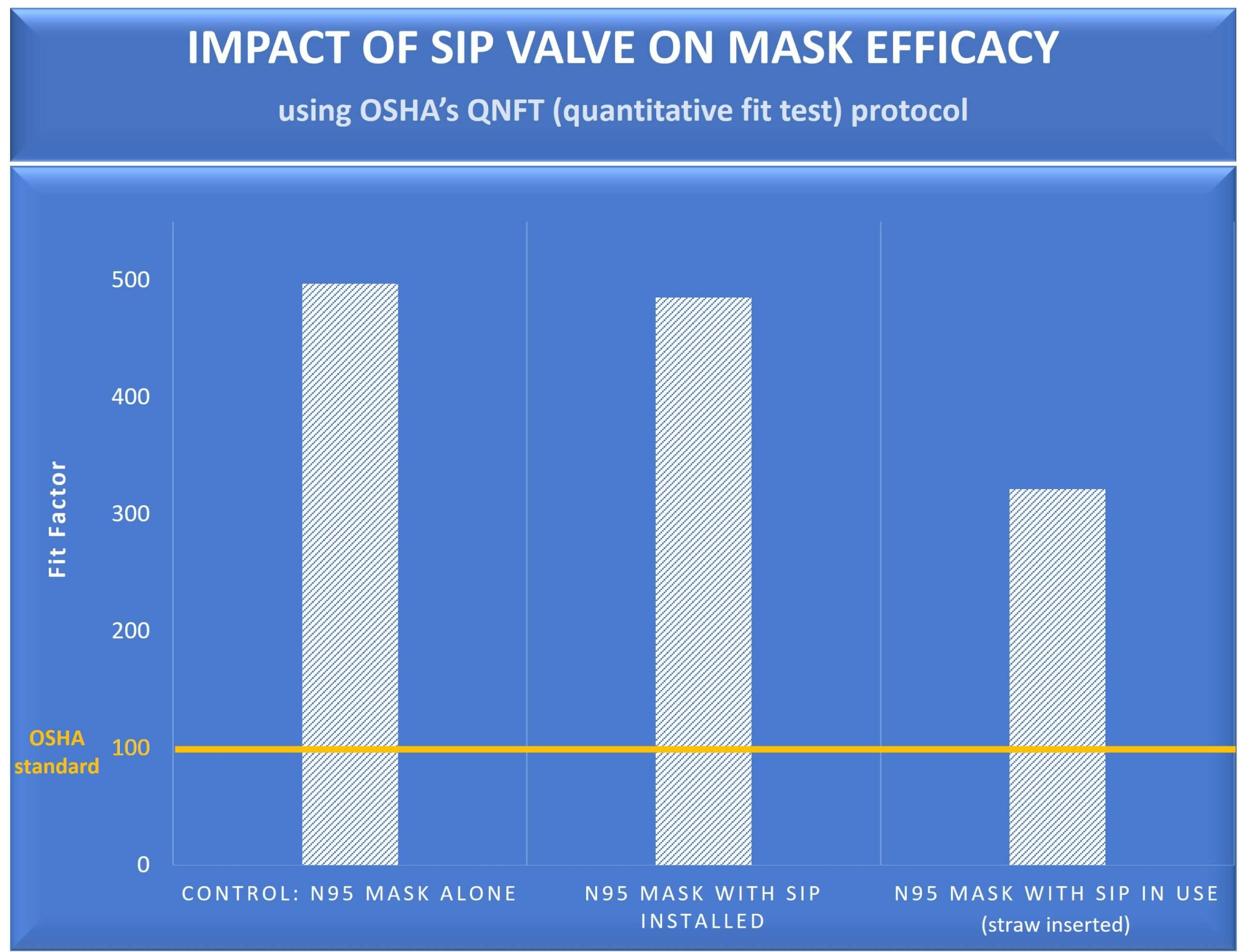
Fit factor is a measurement used to determine the particle count downstream (outside a mask) and upstream (inside a mask). A fit factor of 100 means that air within the mask is 100 times cleaner than air outside the mask. A fit factor of 100 is the OSHA requirement for fitted N95s.
Of course, it’s always best to test these claims to see if the valves work outside of lab testing conditions. While I don’t have access to a particle counter at the moment, Gerard Hughes tested the leakage of the valve on YouTube. You can find the video and summarised results below:
With a 3M Aura and no modifications, Gerard had a fit factor of 382 (meaning upstream or outside the mask, there were 382x more particles than downstream or inside the mask). With SIP installed but closed, the fit factor was 332 and with a straw installed, the fit factor ranged from 105 to 230. This is a vast improvement compared to placing a straw under the mask, which resulted in a fit factor of only 4.6.
Gerard also tested the valve after different combinations of straw insertions, and even after 200 insertions, the valve continued to provide a fit factor far in excess of 100 (which is the requirement to pass an OSHA fit test), showing that the valves indeed provide vastly more protection than taking a sip or drinking any other way.
It’s also worth mentioning that you should never be inserting a straw in the mask without drinking. SIP specifically instructs users to insert the straw in their drink before the mask, therefore minimising exposure further, as you should never breathe air through the straw.
SIP valves are reusable but not infinitely so. Therefore, while you can take the valves off your mask or respirator once they become worn and install them on another mask, you will eventually need to replace them. I believe this is primarily due to the integrity of the valve, as every straw insertion slowly loosens the valve until the seal is no longer airtight.
SIP recommends replacing the valves after ten installations or 30 days – whichever comes first. This is a reasonable length of time and will allow you to ensure the seal isn’t compromised and you are always staying protected.
Installing SIP Valves
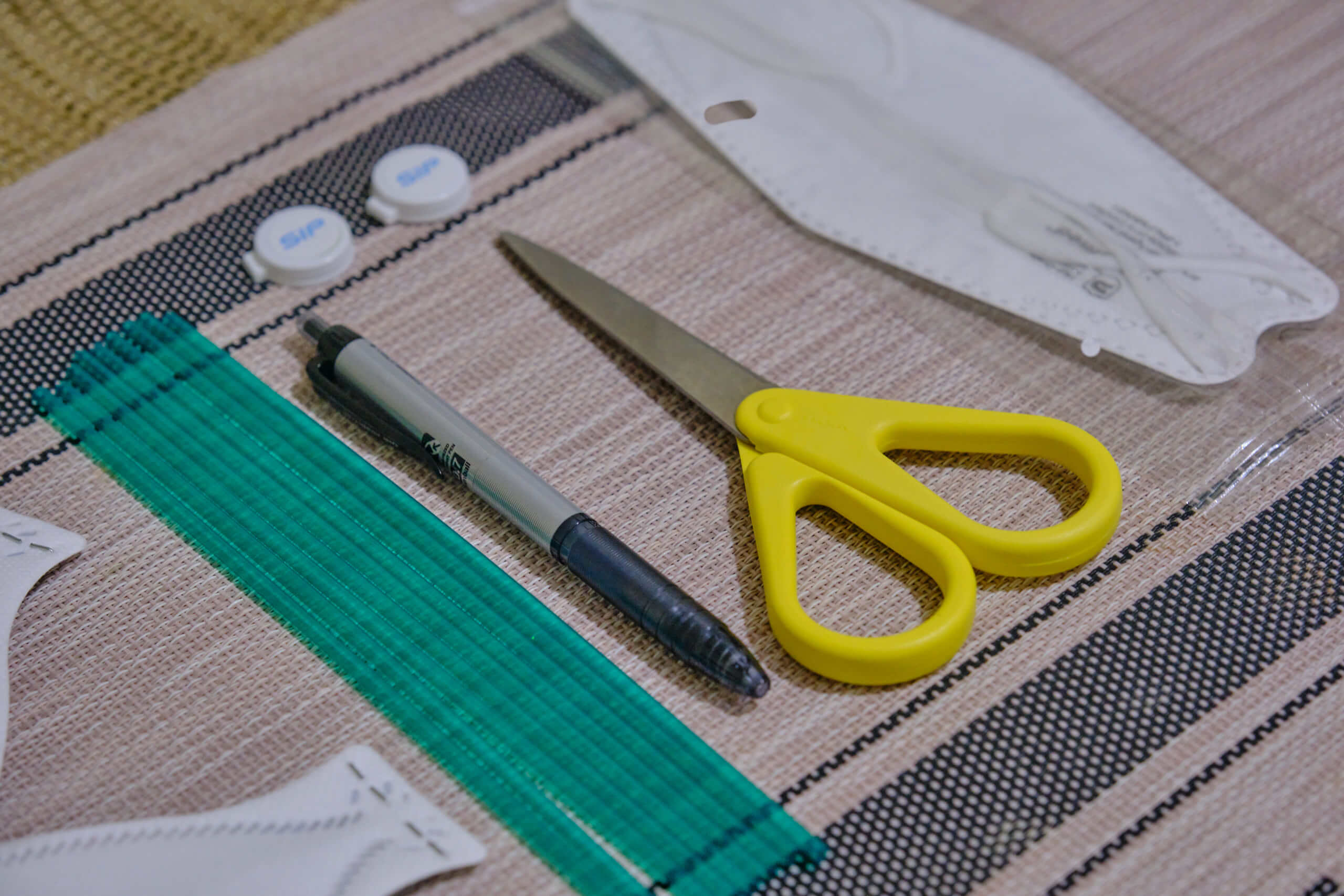
After reading some comments on Twitter about how other users had damaged masks and respirators irreparably when trying to install SIP valves, I went into my first installation slightly nervous. I was using one of my three 3M Aura 9205+ respirators, and I didn’t want to risk a mistake as I need these respirators for an upcoming Aura comparison article.
With this worry in mind, I managed to rope my girlfriend into helping me install the first valve. She’s fantastic at precise crafts like this, and I couldn’t risk a wasted respirator. However, as it turns out, even someone clumsy with scissors, such as myself, found the installation process very straightforward. Her and my first valve installations were painless and took only five minutes.
SIP includes installation instructions, and we found the process easy with the included instructions. However, I have a few comments, so I want to detail the process here. Here’s what you’ll need to install SIP:
- Mask/respirator of your choice
- Pen OR pencil
- Scissors
One thing to note: I bought a craft knife, too, as I imagined it would make the process easier. However, this was not needed with a medium-thickness mask such as the 3M Aura. A utility or craft knife might be helpful if you’re trying to install the valve on a thick filter.
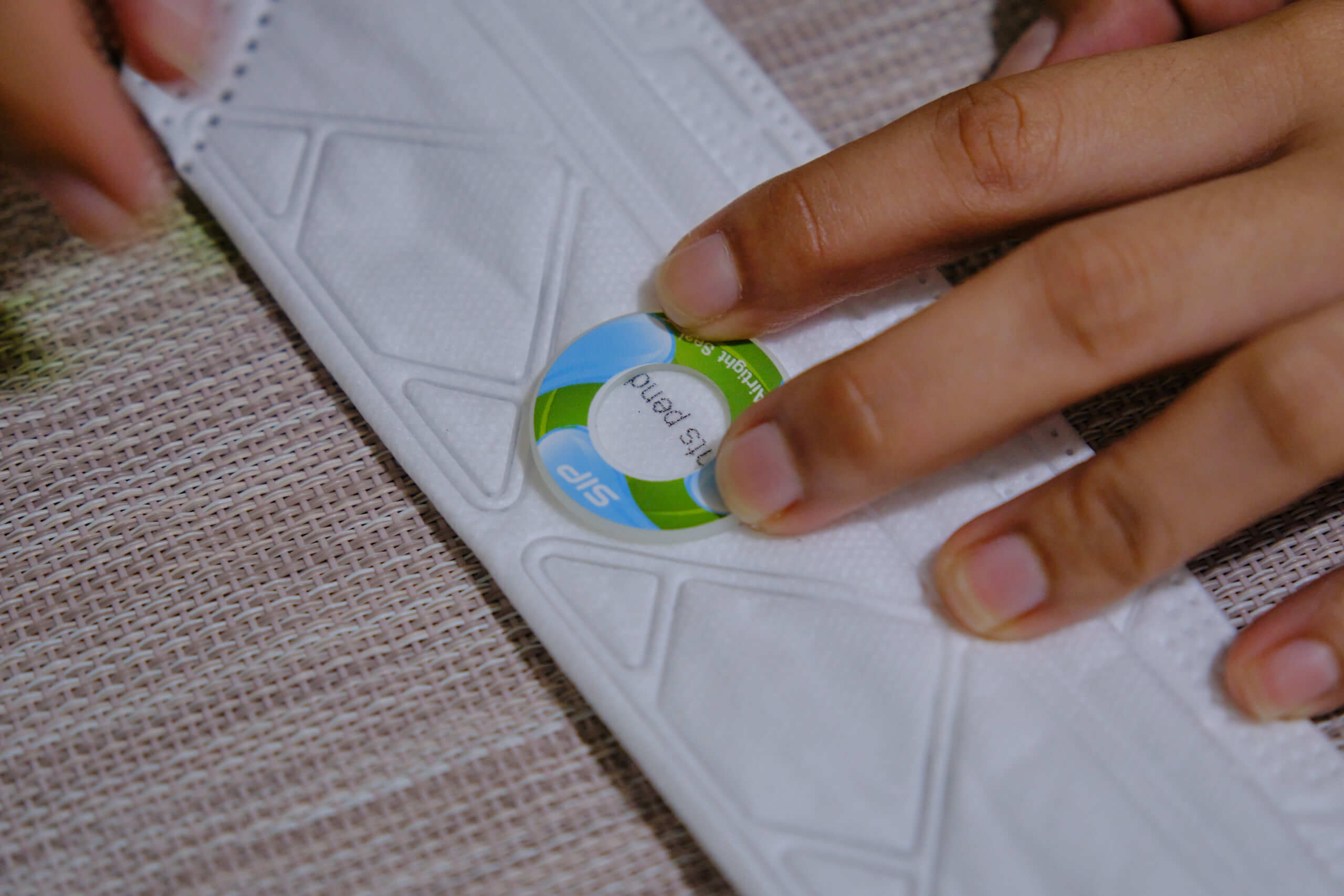
Centring the valve is a good piece of general guidance, but on some masks, such as the VFlex, you might not want to place the valve in the centre. We opted to place it on the bottom of the respirator.
Once you have these items, you can start the installation process! To begin with, you’ll want to find the centre of the mask. This is best done by donning the mask and pucker your lips. Find the middle of your mouth and mark this spot on the outside of the mask. This is most easily done with a mirror or someone to help.
If the mask you’re installing SIP on is bifold and has a crease down the centre (or you otherwise can’t install the valve in the centre of the mask), choose a side of the mask you would prefer to have the straw enter from and place your dot between the centre and edge of your lips.
One thing that isn’t mentioned is the differences in straws. If you have a reusable bendy straw, the location isn’t so important as the straw can be bent to fit. However, if you use a straight metal straw, you will likely want to place the valve below your mouth so the straw can be passed through without bending.

Drawing a circle within the ring.
Once you’ve decided where to install the valve, take the securing ring (the piece of plastic with a blue and green design) and place the dot you drew in the centre of the seal’s inner circle. You’ll now want to grab your pen again and trace this inner circle with the dot you drew in step one as the circle’s centre.
Now comes the fun part; we must cut out the circle we drew! This is where we found an additional step that makes this step vastly easier. If you have a thin mask, it might be possible to poke a hole in the centre of your circle with a knife or scissors. If so, you can create this hole and cut the circle with scissors.
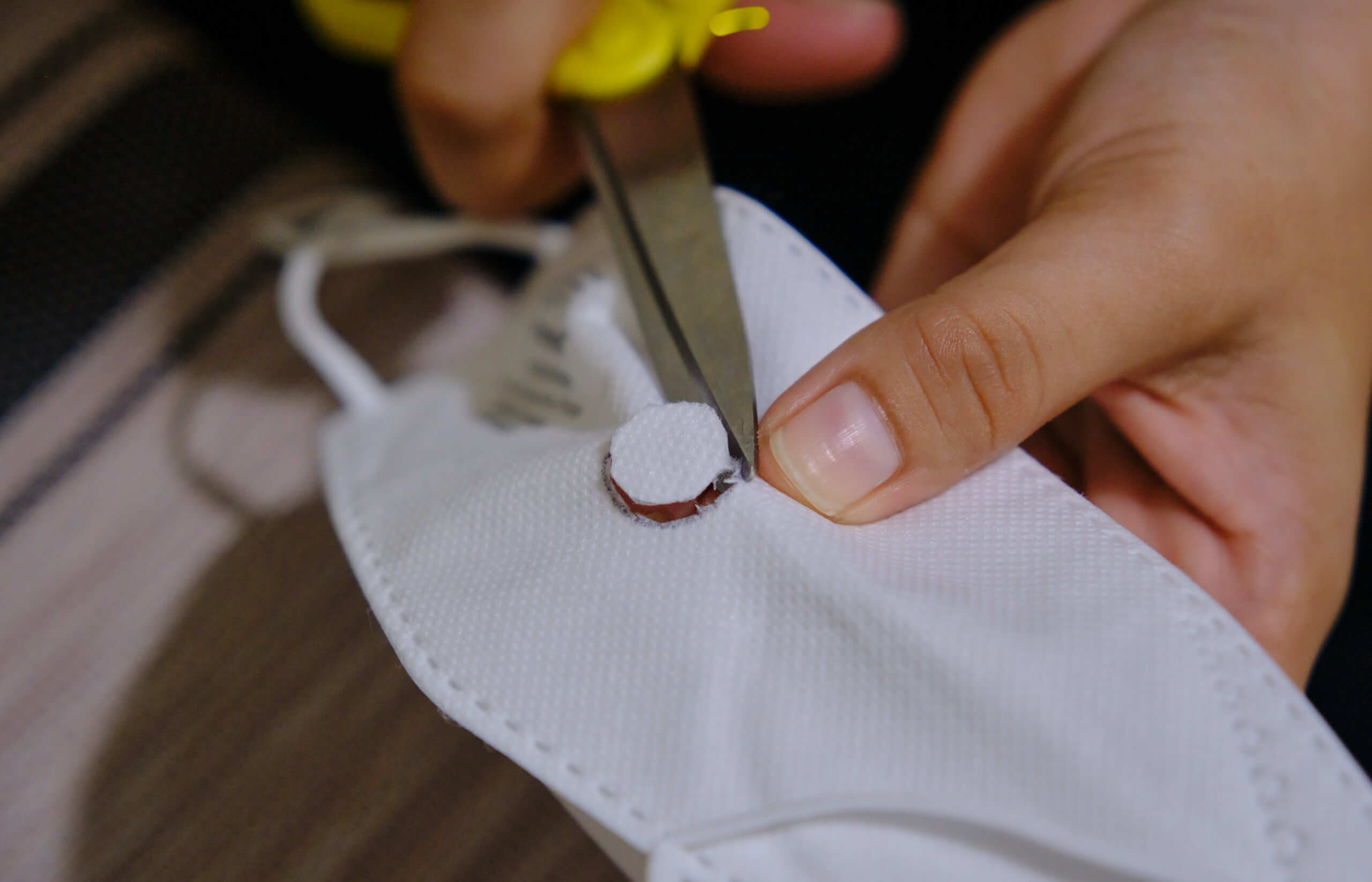
Cutting out the circle. On black masks, we opted to draw a circle on the inside of the mask instead.
If your mask is a bit more sturdy, we found the best approach was to fold the mask or filter in half and make a small cut with sharp scissors. Once you’ve made this first cut, you can insert the scissors and complete your circle.
The more precise your circle, the better, as you’re less likely to run into leakage issues. However, even someone who can’t cut a perfect circle, like myself, had no problems installing the valve. Your circle doesn’t need to be perfect; it just needs to be as circular as possible.

Ensure the ‘head’ of the valve is on the outside of the mask, and the base is inside.
Once you have a circle cut in the mask, you can relax. From here on out, everything is quite easy, and you shouldn’t run into any problems. For the next step, you will want to squeeze the valve (the transparent, squishy plastic part) through the mask. Ensure you start from the inside of the mask and that the broader base is on the inside.
Once the valve head is pushed through the mask, you can place the securing ring around the valve head on the outside of the mask. Pushing the valve head through the securing ring can be a bit difficult, but the process is relatively easy as long as you push one side through first before pushing the opposite side.
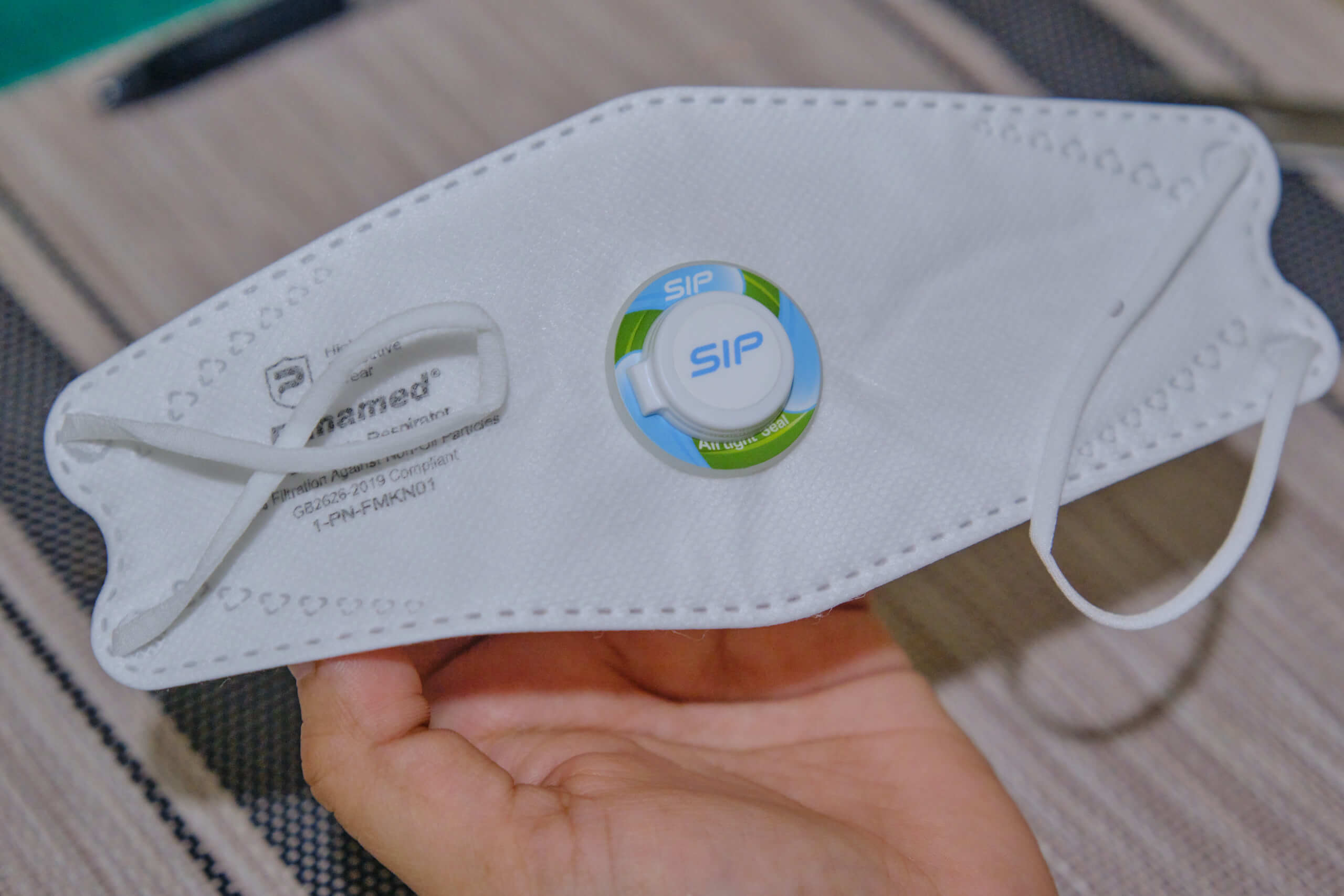
Once you place the outer ring on the valve, installation is complete!
Finally, you can place the valve cap over the valve. While the cap isn’t needed to keep the seal airtight, it helps to ensure no particles will pass through the seal, and it also has a double purpose in helping the seal remain clean when not in use.
How to Use SIP
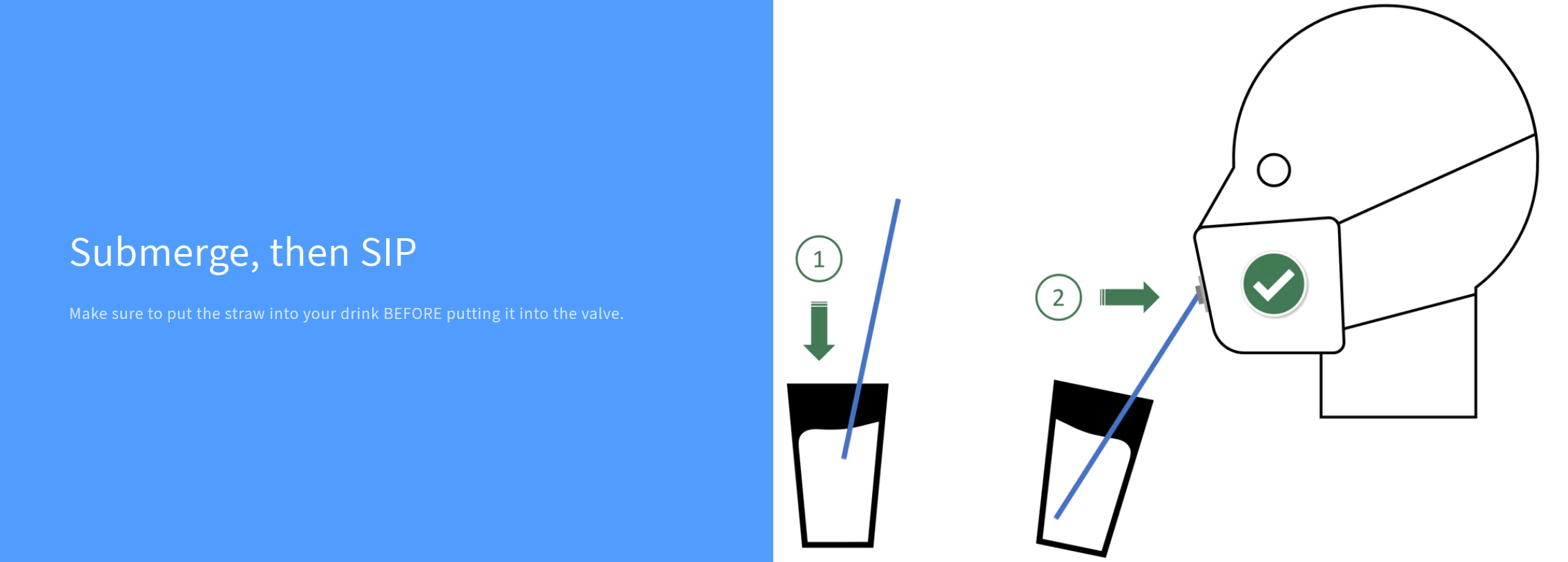
When I first posted images of the SIP valve on Twitter, there were a lot of questions from readers regarding how to lower exposure even further. At first look, there are a few flaws with SIP. For example, when you insert the straw into your mask before placing it in your drink, you’re exposing yourself for a few breaths, right? As it turns out, the team behind SIP has considered these potential issues and has a guide detailing how to avoid them.
The critical takeaway and most crucial piece of information to take away from the SIP guide is always to keep your straw in your drink. Before inserting the straw into your mask, submerge the other end in your drink. If you take the straw out of your mask for any reason, ensure the other end is still in your drink. These steps ensure you aren’t exposing yourself to ambient air and the particles within.
While these steps can take a little while to get used to (for the first few days, I found myself pulling the straw out of my drink first as it felt natural), once you are familiar with the steps, they feel like second nature. While I’ve only used the valves for a few weeks, I can imagine that after a month or two of use, you won’t even consider removing the straw from your drink first.

What about actually inserting the straw? This takes some time to get used to, and you sometimes need to ‘reset’ your brain if you change masks and valve location. For the first week of use, I had to guide the straw through my mask with my other hand. Finding the valve was difficult, and piercing it with the straw was hard until I memorised its location.
The larger the straw, the more difficult this process is. While the valve accommodates straws up to 6mm in diameter (sorry, no frappuccinos or bubble tea!), inserting these straws can be tricky until you get some practice with smaller straws. Thankfully, the SIP team has considered this, and each installation kit comes with multiple small ‘trainer’ straws (think of the small straws you often get with a black coffee at Starbucks). After some practice with these, moving to the more standard 4mm and even 6mm straws is much easier.
As mentioned above, you unfortunately won’t be able to drink everything through a SIP valve. Anything that requires a large straw, such as a frappuccino, bubble tea, or even some smoothies, won’t be possible to drink with the valve. If you want to drink something heavier through the straw, such as a protein shake or smoothie, I found the best method was to make these at home and ensure they are mixed or blended well enough to be sippable through a 4mm or 6mm straw. Unfortunately, if you order one of these drinks at a cafe, the chances are you won’t be able to use the included straw.
One note to remember is that SIP valves aren’t indefinitely reusable. Since every straw insertion means you are wearing the seal down and removing its integrity, each seal should be replaced after ten mask installations or 30 days of use. Of course, if you only use it infrequently, you can expect to use it for longer.
Using SIP Daily

So, now that we’ve discussed how to install the SIP valve and how to ensure it’s ready for use, it’s worth discussing how the valve feels to use in daily life. I’ve installed SIP valves on a few different masks and respirators, and I’ve primarily been using it with my Aura 9205+, VFlex 9105 and a mix of random KN95 and KF94 masks.
The mask or respirator feels normal when the valve isn’t in use. While the valve should lead to a slight decrease in breathability, the difference is negligible, and I never found this to be an issue. This stays the same regardless of whether the valve is covered because the silicone valve restricts airflow even when uncovered. This is all to say you shouldn’t notice any difference in breathability with SIP.
While I had no issues with comfort on larger masks that stay away from my face, such as the Aura and VFlex, I did find that some bifold KF94s and KN95s caused issues. Some of these masks sit close to or on my face, and adding a plastic valve that regularly rubbed against my face made them quite uncomfortable to wear. Luckily, I don’t wear these kinds of masks regularly as they tend to provide a poor fit.

On masks and respirators with a gap between the filter and my face, I had no comfort issues whatsoever with the SIP valve. In fact, besides the times I used the valve to take a sip, I easily forgot that it was on my mask. It’s easy to forget about, and for a product like this, I view that as a great sign.
Some might ask how the valve is received, as I understand that anything that attracts more stares can make wearers uncomfortable. Luckily, when I wasn’t drinking, no one gave me a second glance with SIP installed. It looks like a standard valve, and I assume anyone who sees it assumes the same.
Most people wouldn’t notice when I was drinking, but I did get a few surprised looks and second glances. These didn’t bother me, but if you don’t want to attract extra attention, it’s easy enough to turn away whenever you need to drink.
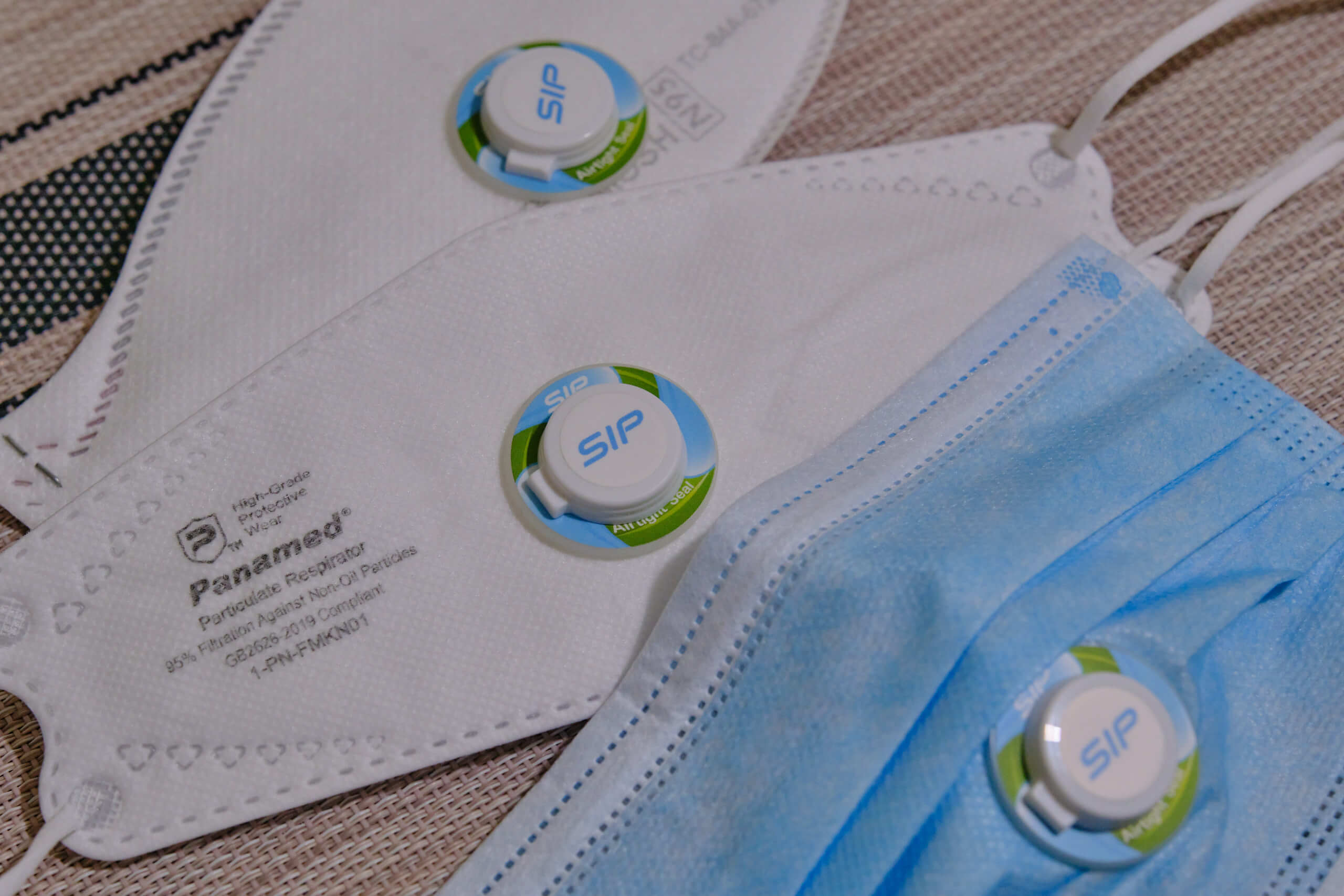
When it comes to actually using the valve to drink, it’s a straightforward process. While the valves take some time to get used to (and you’ll probably find yourself guiding the straw with your second hand initially), this is quickly overcome with some practice. In fact, the only issue I ever had with using the valve was accidentally poking myself in the face when pushing the straw through a new, and therefore tight, valve.
Provided you’ve installed the valve in the right location on your mask (this isn’t always the centre or side on a bifold – on the VFlex, I found the best position was on the bottom), passing a straw through the valve and into your mouth should be no issue at all. Finding this position might take a few attempts, but once you do, you are sorted.
SIP Pricing & Availability
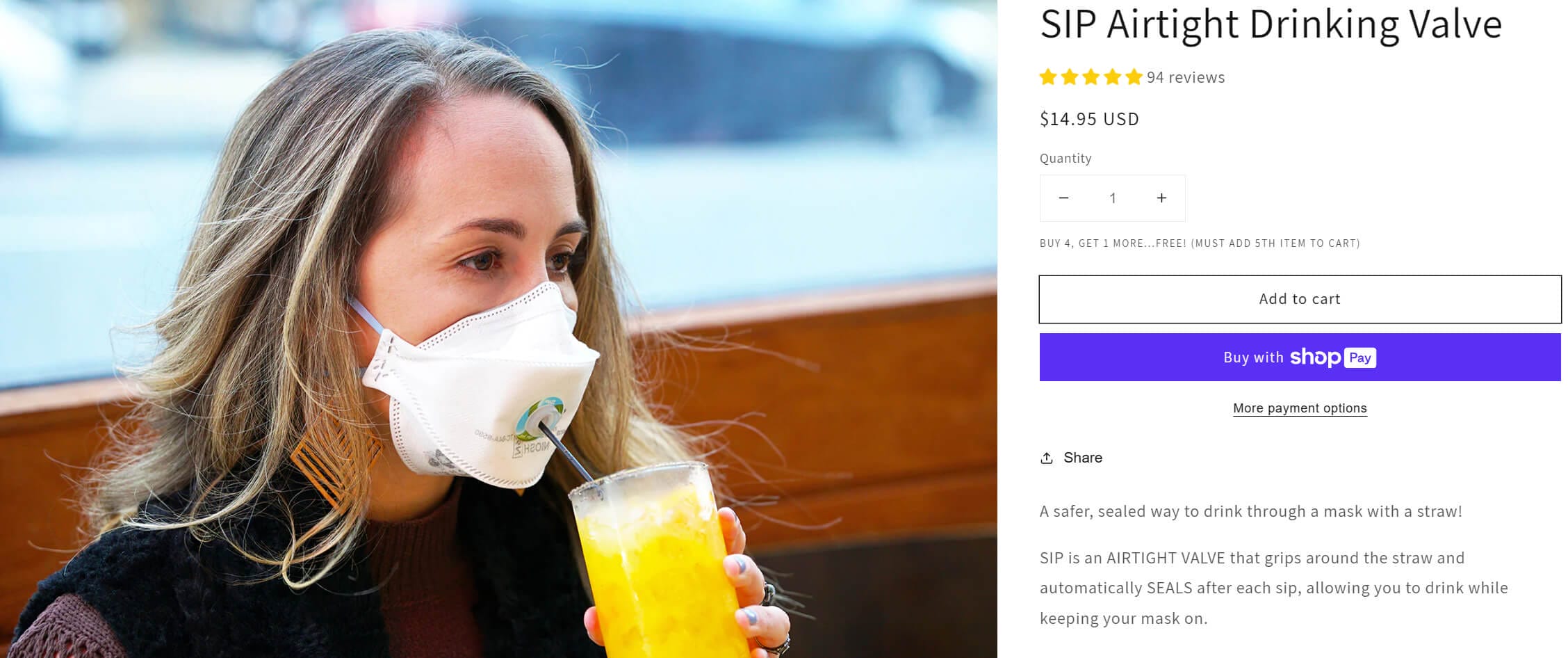
Each SIP valve is $14.95, and if you purchase four, you will get one for free. Since each valve is rated for 30 days of use, you’re looking at around 0.5 USD per day of using your SIP valve. While this might seem steep for a few small pieces of plastic, most of the price is due to the extensive research and testing that went into creating a valve that can be installed on almost any mask or respirator and doesn’t compromise fit or filtration.
The good news is that SIP ships to a wide range of countries through its online store, and you should have no issue getting these shipped to wherever in the world you reside. Unfortunately, the issue with SIP isn’t in the availability but in the shipping fees. For me to get a valve (or valves) shipped home to New Zealand, it costs $22 or $37, depending on the shipping option. For such a small item and light, this is very steep and means the item is mostly only accessible to those in the U.S. and Canada.
With that said, if you purchase in bulk or live in the U.S. or Canada, these valves are worth purchasing if you take your protection seriously. While I think they’re too expensive to use daily, I will keep mine installed on a few 3M Auras, which I reserve for situations when I might need to drink and can’t reduce my risk through other measures. These will likely be my flight and meeting masks.
With this usage, I see SIP valves as being incredibly handy to have on hand. While I personally won’t use them daily as replacing them is very expensive, I will ensure I always have a couple on hand for when I need to fly (which I regularly do as a digital nomad) or for other occasions that involve me being inside and near others for long periods.
Conclusion – Are SIP Valves Worth It?
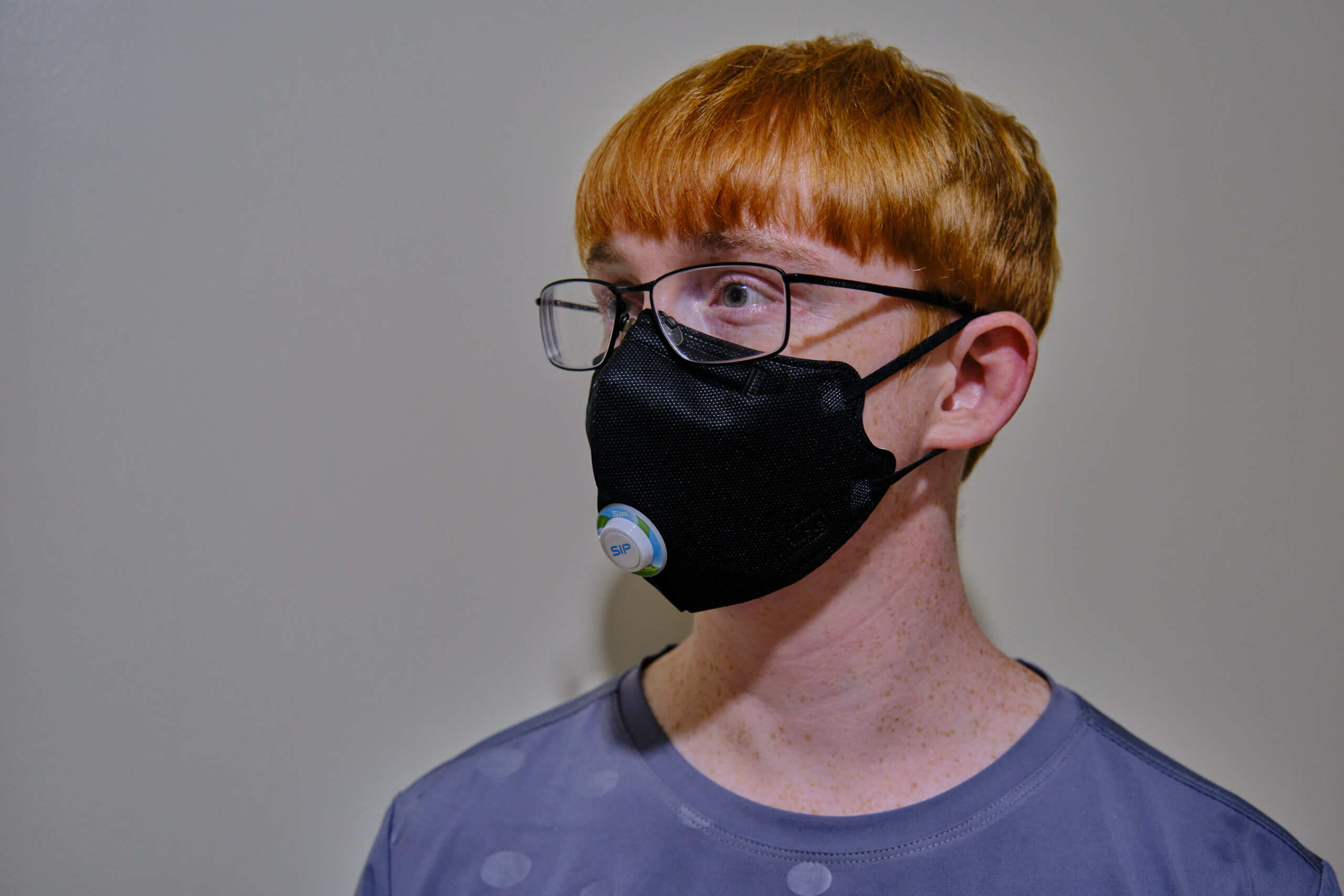
SIP valves are your best bet if you’re looking for a way to drink while wearing a mask. They are straightforward to install, and they perform very well. While they take some time to get used to, being able to take a sip without exposing yourself is priceless in some situations. On top of that, SIP are the only user-installable valves that won’t compromise your mask or respirator performance.
The only downside I see to these valves is the pricing. With the high shipping fees, I will keep them on a few respirators that I only use in particularly high-risk situations. With that said, I see the value in having a few on hand. Anyone who regularly travels, attends lectures and meetings, or remains in close contact with others for long periods will find these valuable tools.
If you don’t regularly find yourself in these situations, I think that SIP valves are still handy to have on hand. If you only use them occasionally, you can get a much longer lifespan out of the valves, assuming they are stored correctly. For this reason, I recommend that anyone who takes their protection seriously checks out SIP to see if they might work for you.
What Is SIP?
SIP is a user-installable valve that allows the wearer to drink with a straw without removing their mask.
How Does SIP Work?
SIP is a three-piece system that allows a straw to pass through a mask without compromising fit or filtration.
Does SIP Compromise Fit or Filtration?
No. SIP is OSHA-tested and does not compromise fit or filtration.
Can I Use SIP on Any Mask?
While you can install SIP on most masks and respirators, it likely won’t work on masks and respirators that have materials or fabrics covering the filter. It will work on almost any disposable mask or respirator, however.
Have Questions or Comments?
Join the discussion on the BreatheSafeAir Community Forum. Ask any questions you have about air quality or adjacent topics and get quick answers!
SIP Valve
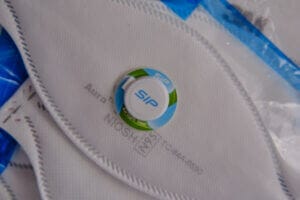
SIP is an intriguing invention that allows the wearer to drink without removing their mask or respirator. Learn everything you need to know about the SIP valves in this article!
Product Brand: SIP
4
Pros
- Allows you to drink without exposing yourself
- Easy to install
- Works on almost any disposable respirator or mask
- Fits all but the largest straws
- Doesn't compromise fit, filtration or comfort
- Reusable (10x or for 30 days)
Cons
- Expensive (especially if you are outside the U.S)
- Can result in some damaged masks if you're not careful